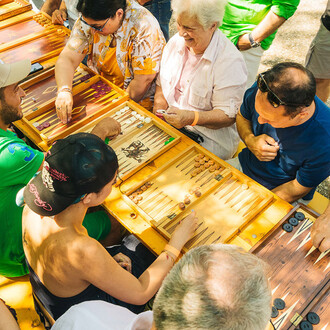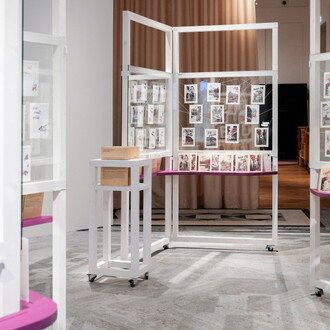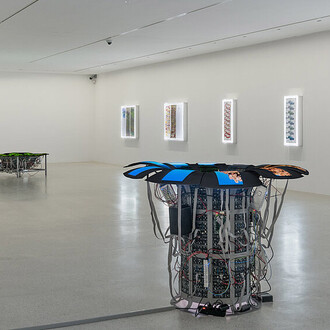If you leaf through family albums from the two decades between 1930 and 1950, you will find biographies, but hardly history. The photographs give the impression that the lives of most families during this period were an eternal weekend. The discrepancy between the images and our historical knowledge about these years and their catastrophes is striking. How does it come about?
We don't know who these people were who looked into or past the lens of the camera somewhere in Austria sometime in the 1930s. "Everybody line up! It's time to snap!" was noted above the group picture in the album, which was put together considerably later - a teasing tone of command is satirized here and shows that such photographs were indeed private and yet also a medium of control. Who controls whom and how is not easily recognizable and seldom unambiguous; it is striking, however, how much private photography avoids taking up something of the politics and history of these years. Almost all pictures tell something about the good life in a perfect world with silver weddings, convivial evenings, weekend excursions and Christmas gift tables.
The exhibition "Everybody, line up! It's time to snap!" deals with the role of private photography in Austria from 1930 to 1950, two decades that have been permeated by ruptures - the cold coup d'état of Austrofascism, the suppression of the socialist resistance and the failed coup d'état of the Nazis, "Anschluss", World War, Shoah and finally defeat, liberation and occupation by the allied troops. There are many pictures of them to be seen in books and exhibitions. But the private photography of these years seems to have other tasks than recording the collapse of politics and history for family narratives.
What are these tasks? The aim of the exhibition, which sees itself as a space for exhibitions and research, is to find out more about them. It shows thousands of pictures from private collections, through which visitors can learn more about the private photographic practices of the two decades and, if necessary, pursue their own reflections and investigations. There is space on the walls to arrange the existing and new images according to changing criteria; albums and specialist literature are available at workplaces, for example, to compare one's own family photographs with the existing ones, to locate and date images, or to work on specific questions. The exhibition sees itself as a collaborative research project. Knowledge processes take place publicly, and the generated results constantly change the visible surface of the exhibition.
















